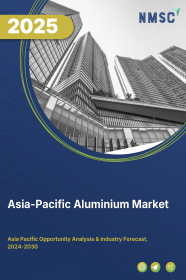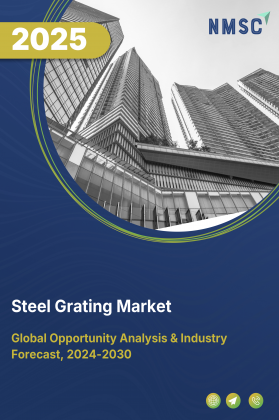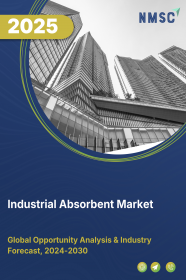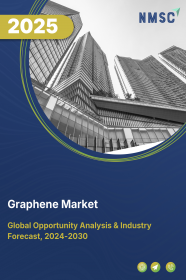
Asia-Pacific Aluminum Market by Types (Primary and Secondary), by Product Type (Flat-Rolled, Castings, Extrusions, Forgings, Powder & Paste, Billets, Wire Rods and Other Types), by Alloy Series (1xxx Series, 2xxx Series, 3xxx Series, 4xxx Series, 5xxx Series, 6xxx Series, 7xxx Series), and by End User Industries (Transportation, Machinery & Equipment, Construction, Packaging, Electrical Engineering, Others End Users) – Country Opportunity Analysis and Industry Forecast, 2025–2030
Industry: Materials and Chemical | Publish Date: 26-Sep-2025 | No of Pages: 237 | No. of Tables: 238 | No. of Figures: 94 | Format: PDF | Report Code : MC1338
Industry Overview
Asia-Pacific Aluminum Market size was valued at USD 102.86 billion in 2023, and is predicted to reach USD 149.96 billion by 2030, at a CAGR of 5.6% from 2024 to 2030. The aluminum market involves the industry dedicated to producing, distributing, and using aluminum, a lightweight and silvery-white metal. Aluminum constitutes about 8% of the Earth's crust and is known for its low density, high strength, and natural corrosion resistance due to an oxide layer. These characteristics make aluminum valuable in sectors such as aerospace, automotive, construction, packaging, and electronics. Its lightweight property enhances efficiency, particularly in transportation. Aluminum is manufactured from bauxite ore through the Bayer process and electrolysis. Advances in technology and recycling have improved the energy efficiency and sustainability of production, supporting the industry's growth.
Policy-led Sustainability Push AccelerateS Market Transformation
The Asia-Pacific aluminium market is witnessing a strong shift toward sustainable production, driven by government-led climate commitments and decarbonization strategies. Regional producers are increasingly adopting low-carbon technologies, investing in renewable energy integration, and expanding recycling capabilities. This transition not only aligns with long-term environmental goals but also enhances the competitiveness of the region’s aluminium industry in global markets that are placing growing emphasis on green and responsibly sourced materials.
Infrastructure Development and EV Growth Boost Aluminium Demand
Continued urban expansion and large-scale infrastructure investments are significantly increasing the demand for aluminium across the Asia-Pacific region. Lightweight, durable, and energy-efficient, aluminium is widely used in smart city projects, public transport systems, and modern construction. Simultaneously, the rapid growth of the electric vehicle sector is driving up consumption of aluminium in vehicle frames, battery housings, and chassis systems. These developments are reinforcing Aluminium’s role as a core material for future-ready, sustainable infrastructure and mobility solutions.
Energy Volatility and Supply Pressures Hinder Cost Stability in Asia-pacific Aluminium Market
The Asia-Pacific aluminium market faces rising cost pressures due to energy supply volatility and fluctuating input prices. Aluminium smelting is highly energy-intensive, and recent disruptions in coal, gas, and renewable energy supply chains across the region have led to inconsistent power availability and elevated production costs. This is particularly challenging for producers in countries dependent on fossil fuels or exposed to regional energy shortages. The resulting cost instability affects pricing strategies, limits margin flexibility, and constrains the ability of smaller or mid-sized players to scale operations efficiently. These challenges are prompting a reassessment of energy sourcing and operational resilience across the industry.
Advancements in Electric Vehicle Technology Create Expanding Opportunities for Asia-pacific Aluminium Market
The rapid evolution of electric vehicle (EV) technology is opening new growth avenues for aluminium in the Asia-Pacific region. Aluminium’s lightweight and high-strength properties are critical for improving EV efficiency, battery performance, and overall vehicle range. As governments accelerate EV adoption through supportive policies and infrastructure investments, demand for aluminium in battery housings, chassis, and lightweight components is set to increase significantly. This trend positions the Asia-Pacific aluminium market at the forefront of the sustainable mobility revolution, driving long-term industrial innovation and economic growth.
China Holds the Dominant Market Share in Asia-Pacific Aluminum Market
The expansion of China's automotive sector is significantly driving the growth of the aluminum market. Aluminum is increasingly favored in the automotive industry due to its lightweight properties, which enhance vehicle efficiency by reducing overall weight and improving fuel economy. The demand for aluminum is rising as it becomes essential in manufacturing critical vehicle components, such as car bodies, engine parts, and structural elements. With China's automotive production expected to reach 35 million vehicles by 2025, according to the International Trade Administration, the need for aluminum is set to grow correspondingly. This increase in vehicle production underscores the importance of aluminum in advancing vehicle technology and performance, further fueling the growth of the aluminum market in China.
The expansion of China's aviation sector is a key driver of aluminum demand. Aluminum's lightweight and durable properties make it essential for manufacturing various aircraft components, including frames, wings, fuselages, and interior parts. As China's aviation industry grows, the demand for aluminum rises, creating more opportunities for suppliers and manufacturers. This increased demand aligns with China's efforts to advance its aviation capabilities, with modern aircraft designs and technologies requiring high-performance materials. Consequently, the growth in aircraft production and maintenance is driving higher aluminum consumption, further boosting the market and offering substantial growth prospects for the aluminum industry.
Thailand to Witness Substantial Growth in the Asia-Pacific Aluminum Market
Urbanization and infrastructure development are significant drivers of the aluminum market in Thailand. With the country undergoing rapid urban expansion, the demand for new buildings, transportation systems, and other infrastructure projects is increasing.Aluminum's strength, lightweight properties, and resistance to corrosion make it a preferred material for these developments. Its versatility allows for the construction of durable structures and efficient transportation networks that align with modern standards. The surge in construction activity is elevating the demand for aluminum, positioning it as a crucial element in Thailand's ongoing infrastructure projects and urban growth.
The Asia-Pacific aluminum market expansion of the automotive industry in Thailand is another significant factor driving the increasing demand for aluminum. As the automotive sector grows, there is a rising need for lightweight materials to enhance vehicle performance and fuel efficiency. Aluminum, known for its low density and high strength, is increasingly used in vehicle manufacturing, including in car bodies, engine components, and structural parts. The Thai automotive industry’s focus on producing more energy-efficient and high-performance vehicles is fueling the Asia-Pacific aluminum market demand. Additionally, as the industry expands its production capabilities and integrates advanced technologies, the need for aluminum continues to rise. This growth in the automotive sector not only boosts the demand for aluminum but also supports the development of related industries and contributes to the overall market expansion in Thailand.
Competitive Landscape
Several key players operating in the Asia-Pacific aluminum industry include Aluminum Corporation of China Ltd. (CHALCO), China Hongqiao Group Ltd., United Company RUSAL, IPJSC, Rio Tinto Aluminium, Alcoa Corporation, Hindalco Industries Ltd., South32 Ltd., Norsk Hydro ASA, Emirates Global Aluminium PJSC (EGA), Vedanta Ltd. – Aluminium, Xinfa Group Co., Ltd., Press Metal Aluminium Holdings Bhd., Shandong Nanshan Aluminium Co., Ltd., National Aluminium Company Ltd. (NALCO), Aluminium Bahrain B.S.C. (Alba) and others.
Asia-Pacific Aluminum Market Key Segments
By Type
-
Primary
-
Secondary
By Product Type
-
Flat-Rolled
-
Castings
-
Extrusions
-
Forgings
-
Powder & Paste
-
Billets
-
Wire Rods
-
Other Types
By Alloy Series
-
1xxx Series
-
2xxx Series
-
3xxx Series
-
4xxx Series
-
5xxx Series
-
6xxx Series
-
7xxx Series
By End User Industry
-
Transportation
-
Aerospace
-
Automotive
-
Marine
-
-
Machinery & Equipment
-
Construction
-
Packaging
-
Food And Beverage
-
Cosmetics
-
Others
-
-
Electrical Engineering
-
Others End Users
By Country
- China
-
Japan
-
India
-
South Korea
-
Australia
-
Indonesia
-
Singapore
-
Taiwan
-
Thailand
-
Rest of Asia-Pacific
Key Players
-
Aluminum Corporation of China Ltd. (CHALCO)
-
China Hongqiao Group Ltd.
-
United Company RUSAL, IPJSC
-
Rio Tinto Aluminium
-
Alcoa Corporation
-
Hindalco Industries Ltd.
-
South32 Ltd.
-
Norsk Hydro ASA
-
Emirates Global Aluminium PJSC (EGA)
-
Vedanta Ltd. – Aluminium
-
Xinfa Group Co., Ltd.
-
Press Metal Aluminium Holdings Bhd.
-
Shandong Nanshan Aluminium Co., Ltd.
-
National Aluminium Company Ltd. (NALCO)
-
Aluminium Bahrain B.S.C. (Alba)
REPORT SCOPE AND SEGMENTATION:
|
Parameters |
Details |
|
Market Size in 2023 |
USD 102.86 Billion |
|
Revenue Forecast in 2030 |
USD 149.96 Billion |
|
Growth Rate |
CAGR of 5.6% from 2024 to 2030 |
|
Base Year Considered |
2023 |
|
Forecast Period |
2024–2030 |
|
Market Size Estimation |
Billion (USD) |
|
Growth Factors |
|
|
Countries Covered |
10 |
|
Companies Profiled |
10 |
|
Market Share |
Available for 10 companies |
|
Customization Scope |
Free customization (equivalent up to 80 working hours of analysts) after purchase. Addition or alteration to country, regional, and segment scope. |
|
Pricing and Purchase Options |
Avail customized purchase options to meet your exact research needs. |




















 Speak to Our Analyst
Speak to Our Analyst

























